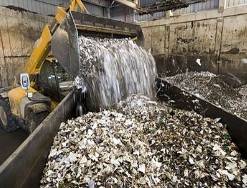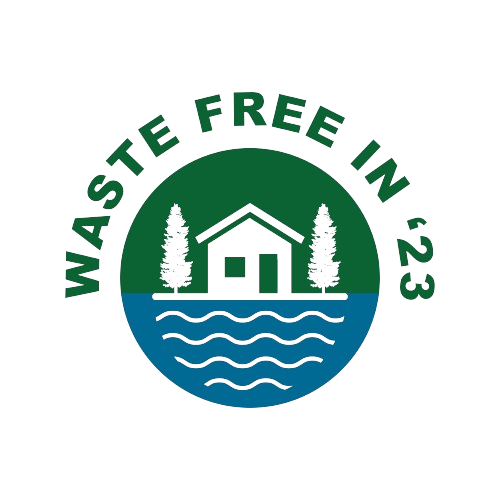WF23 SL Training WF Solution Introduction

WASTE FREE SOLUTION TOWARDS WASTE INTRODUCTION - MIS. ISHA KARGBO FRIDAY’S FOR FUTURE SIERRA LEONE

Waste management is a big challenge in Sierra Leone, but there are some solutions being implemented.
One solution is to improve the country’s waste collection and disposal system; this could involve setting up more recycling centers and improving the infrastructure for collecting and disposing of waste.
Another solution is to raise awareness about the important of proper waste management and to encourage people to reduce reuse and recycle
Waste
Waste is unwanted or unusable materials. Waste is any substance discarded after primary use, or is worthless, defective and of no use. A by-product, by contrast, is a joint product of relatively minor economic value. A waste product may become a by-product, joint product or resource through an invention that raises a waste product’s value above zero. Examples include municipal solid waste, hazardous waste, wastewater, radioactive waste, and others.

Types of waste
Municipal waste
The Organization for Economic Co-operation and Development also known as OECD defines municipal solid waste (MSW) as “waste collected and treated by or for municipalities” Typically this type of waste includes household waste, commercial waste, and demolition or construction waste. In 2018, the Environmental Protection Agency concluded that 292.4 tons of municipal waste was generated which equated to about 4.9 pounds per day per person. Out of the 292.4 tons, approximately 69 million tons were recycled, and 25 million tons were composted.
Household waste and commercial waste
Household waste more commonly known as trash or garbage are items that are typically thrown away daily from ordinary households. Items often included in this category include product packaging, yard waste, clothing, food scraps, appliances, paints, and batteries. Most of the items that are collected by municipalities end up in landfills across the world. In the United States, it is estimated that 11.3 million tons of textile waste is generated. On an individual level, it is estimated that the average American throws away 81.5 pounds of clothes each year. As online shopping becomes more prevalent, items such as cardboard, bubble wrap, shipping envelopes are ending up in landfills across the United States. The EPA has estimated that approximately 10.1 million tons of plastic containers and packaging ended up landfills in 2018. The EPA noted that only 30.5% of plastic containers and packaging was recycled or combusted as an energy source. Additionally, approximately 940,000 pounds of cardboard ends up in the landfill each year.
Commercial waste is very similar to household waste. To be considered as commercial waste, it must come from a business or commercial occupancy. This can be restaurants, retail occupants, manufacturing occupants or similar businesses. Typically, commercial waste contains similar items such as food scraps, cardboard, paper, and shipping materials. Generally speaking, commercial waste creates more waste than household waste on a per location basis.
Construction and demolition waste
The EPA defines this type of waste as “Construction and Demolition (C&D) debris is a type of waste that is not included in municipal solid waste (MSW).Items typically found in C&D include but are not limited to steel, wood products, drywall and plaster, brick and clay tile, asphalt shingles, concrete, and asphalt. Generally speaking, construction and demolition waste can be categorized as any components needed to build infrastructures. In 2018, the EPA estimated that the US generated approximately 600 million tons of C&D waste. The waste generated by construction and demolition is often intended to be reused or is sent to the landfill. Examples of reused waste is milled asphalt can be used again for the asphalt mixture or fill dirt can be used to level grade.
Hazardous waste: The EPA defines hazardous waste as “a waste with properties that make it dangerous or capable of having a harmful effect on human health or the environment.”Hazardous Waste falls under the Resource Conservation and Recovery Act (RCRA). Under the RCRA, the EPA has the authority to control hazardous waste during its entire lifecycle] This means from the point of creation to the point where it has been properly disposed of. The life cycle of hazardous waste includes generation, transportation, treatment, and storage and disposal. All of which are included in the RCRA. Some forms of hazardous waste include radioactive waste, explosive waste, and electronic waste.
Radioactive waste: Radioactive waste, often referred to as nuclear waste, is produced by various industries such as nuclear power plants, nuclear reactors, hospitals, research centers, and mining facilities. Any activity that involves radioactive material can generate radioactive waste. Furthermore, such waste emits radioactive particles, which if not handled correctly, can be both an environmental hazard as well as a human health hazard.When dealing with radioactive waste, it is extremely important to understand the necessary protocols and follow the correct precautions. Failure to handle and recycle these materials can have catastrophic consequences and potentially damage the site’s ecosystems for years to come.
Radioactive waste is monitored and regulated by multiple governmental agencies such as the Nuclear Regulatory Commission (NRC), Department of Energy (DOE), Environmental Protection Agency (EPA), Department of Transportation (DOT), and Department of the Interior (DOI). Each agency plays an important role in creating, handling, and properly disposing of radioactive waste. A brief description of each agency’s role can be found below.
NRC: “Licenses and regulates the receipt and possession of high-level waste at privately owned facilities and at certain DOE facilities.
DOE: “Plans and carries out programs for sand handling of DOE-generated radioactive wastes, develops waste disposal technologies, and will design, construct and operate disposal facilities for DOE-generated and commercial high-level wastes.
EPA: “Develops environmental standards and federal radiation protection guidance for offsite radiation due to the disposal of spent nuclear fuel and high-level and transuranic radioactive wastes.
DOT: “Regulates both the packaging and carriage of all hazardous materials including radioactive waste.
DOI: “Through the U.S. Geological Survey, conducts laboratory and field geologic investigations in support of DOE’s waste disposal programs and collaborates with DOE on earth science technical activities.
High-level Waste: This type of radioactive waste is generated from nuclear reactors or reprocessing spent nuclear fuel.
If you have any questions, contact:
- www.wastefree23.org
- https://www.facebook.com/groups/1257683511822828
- Wastefree23@gmail.com
- Whatsapp +14084620209
